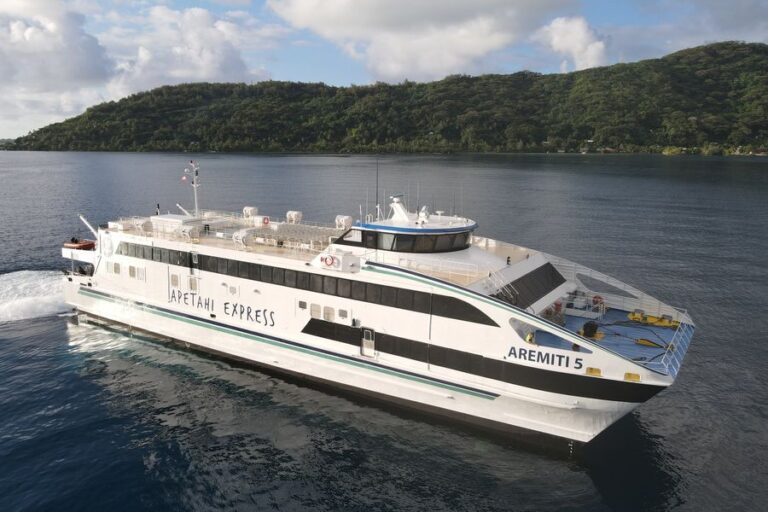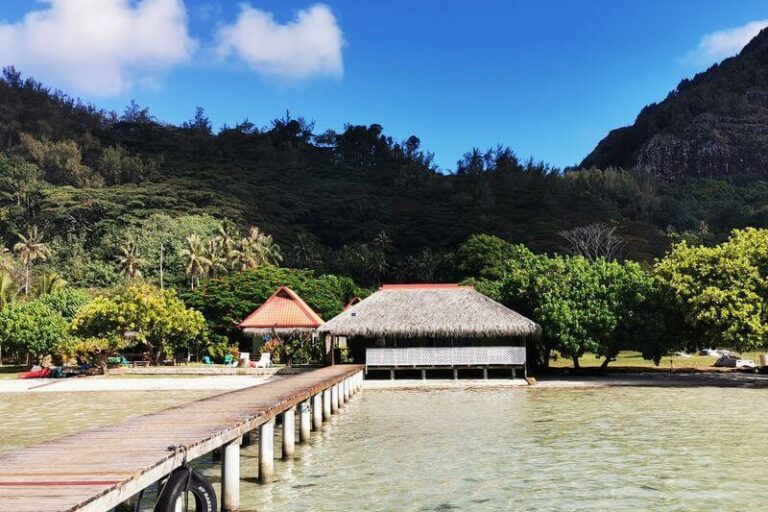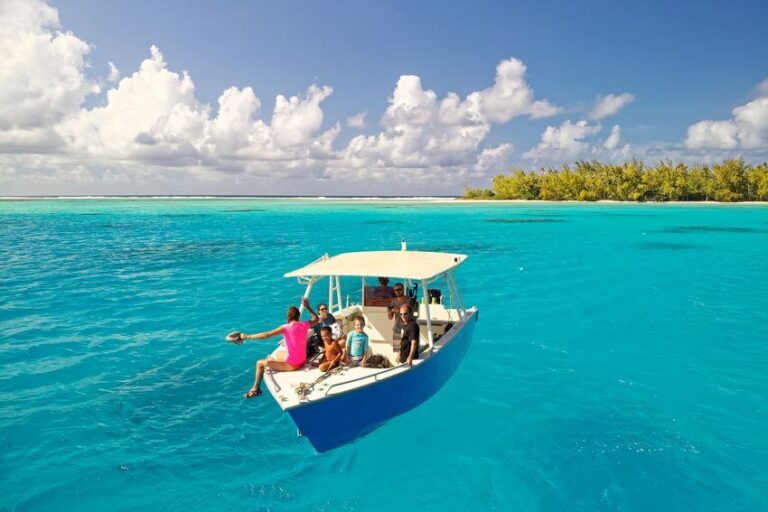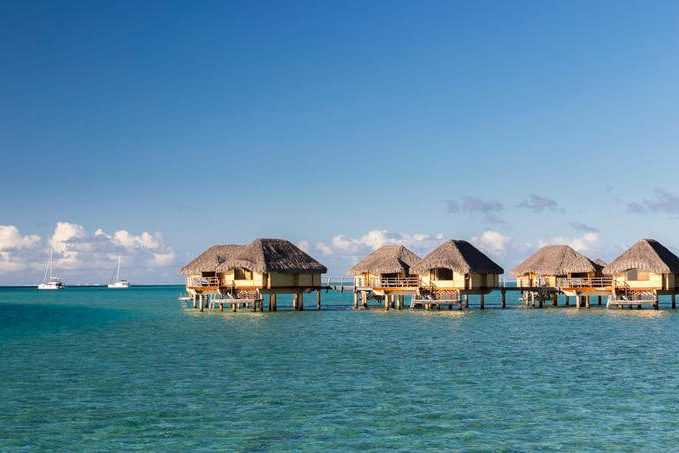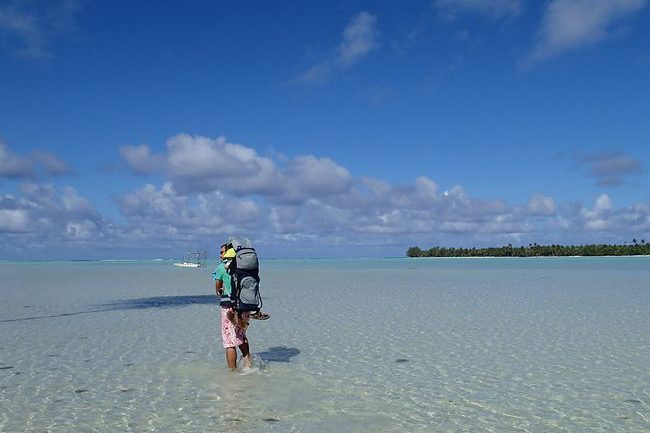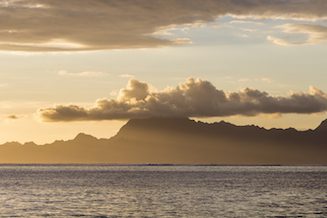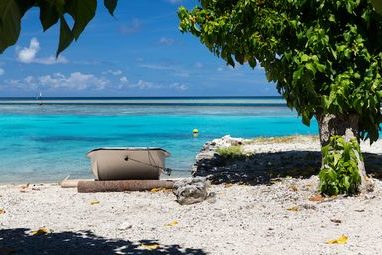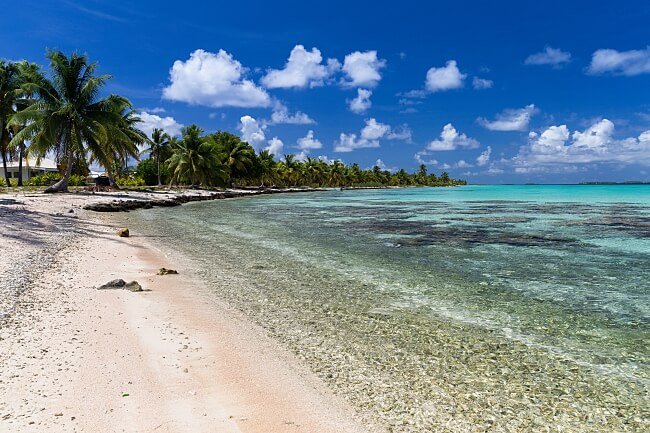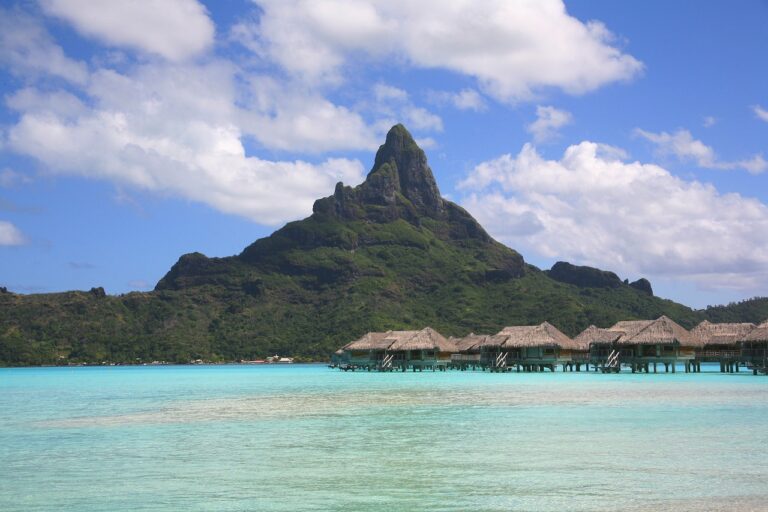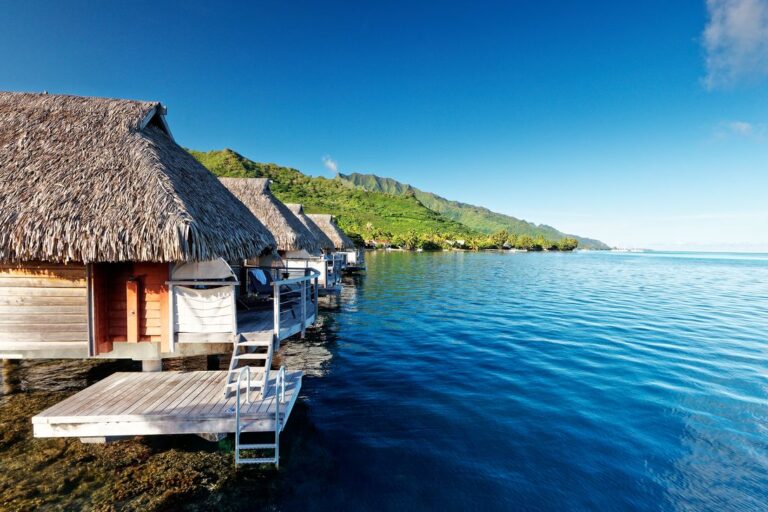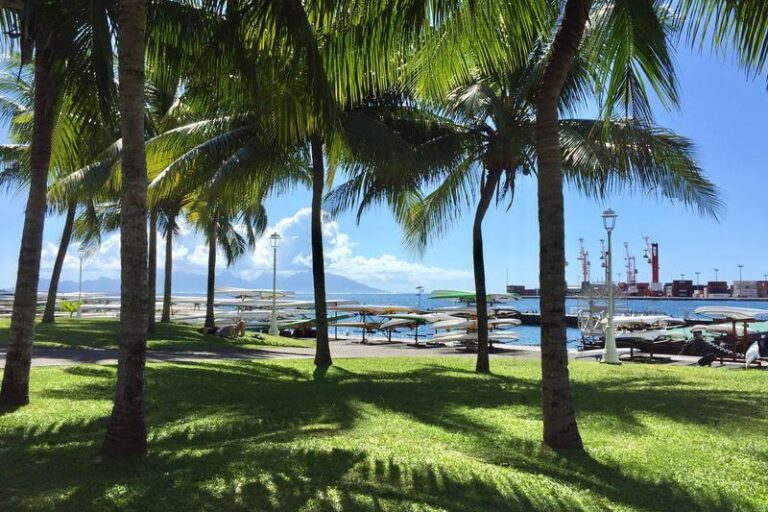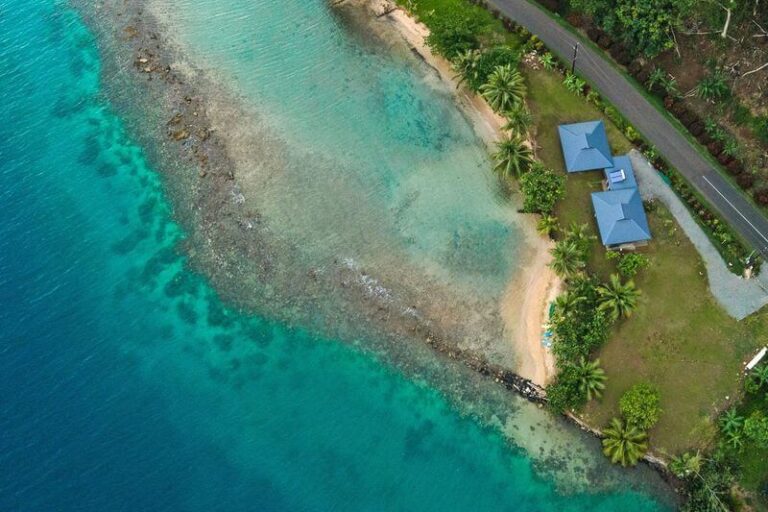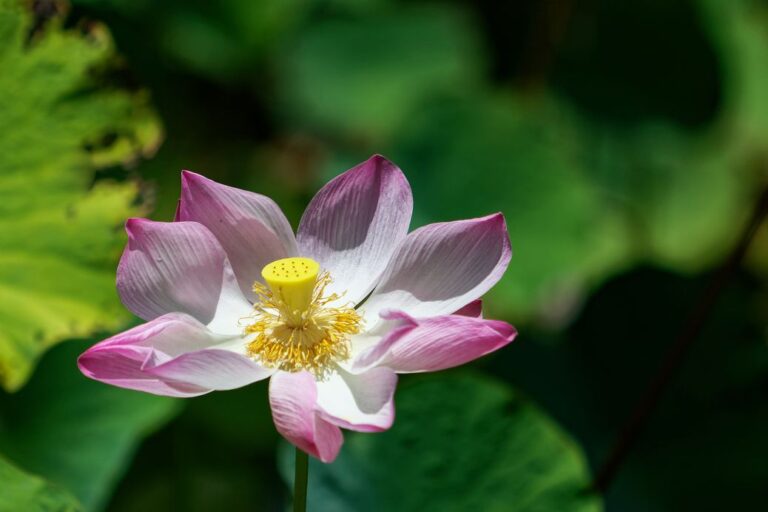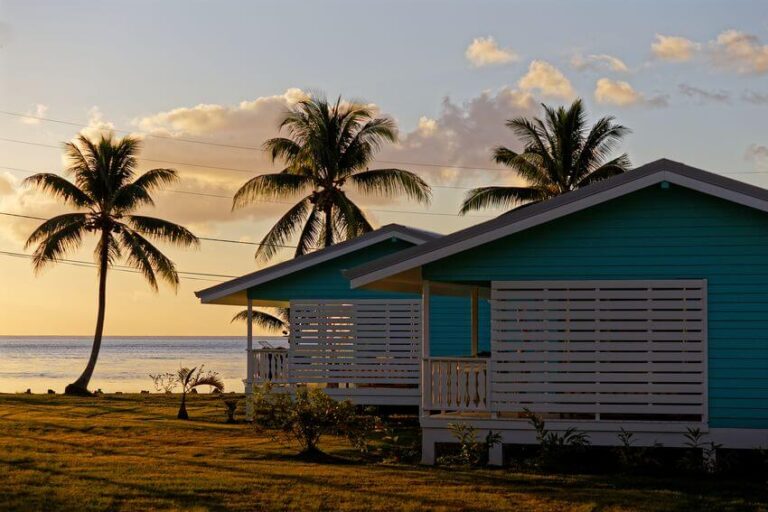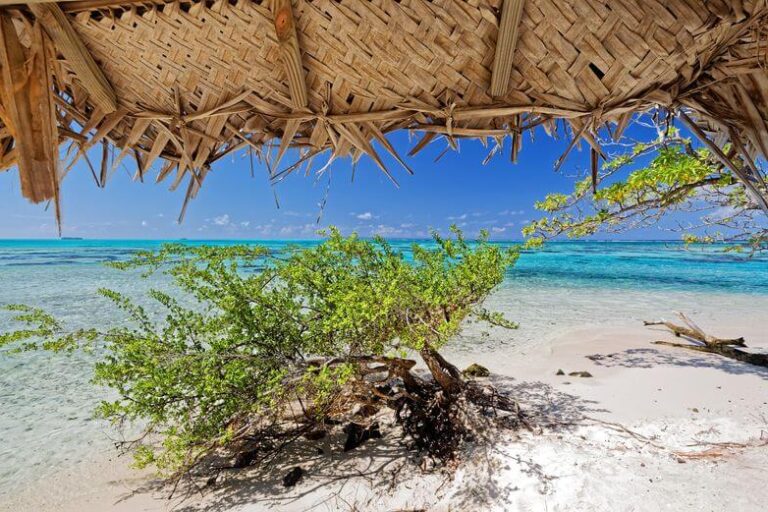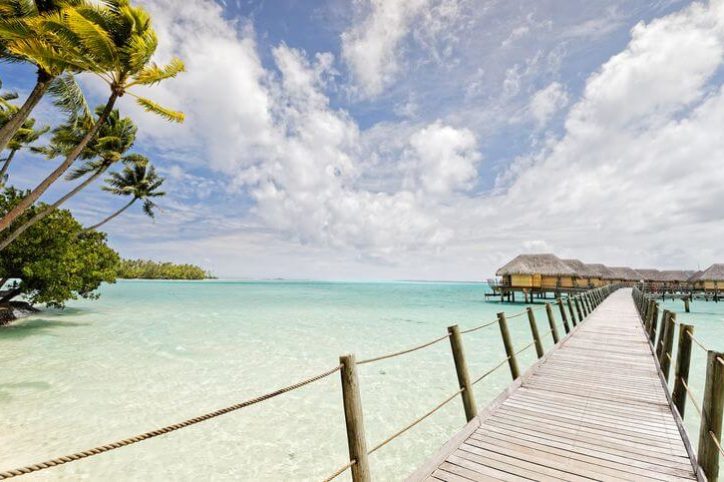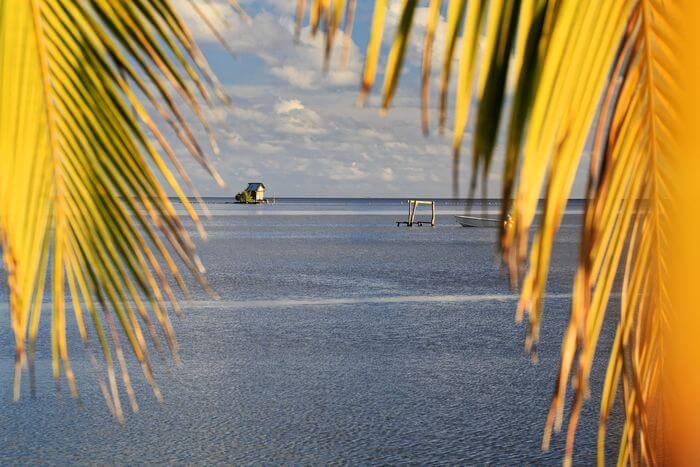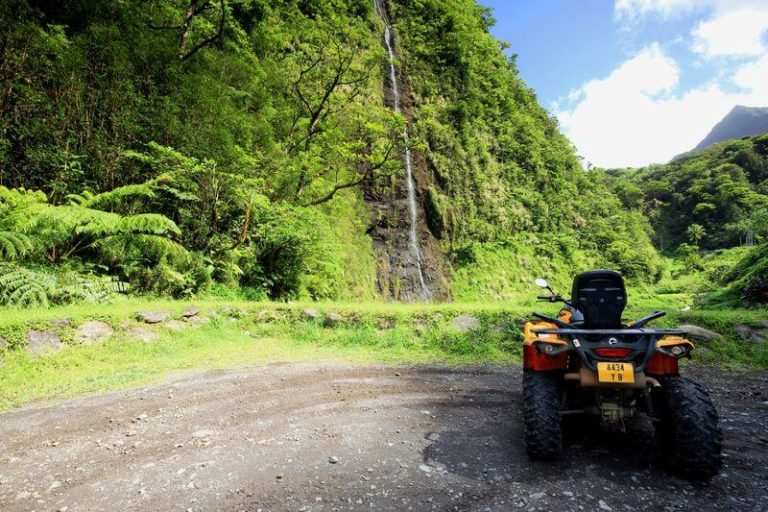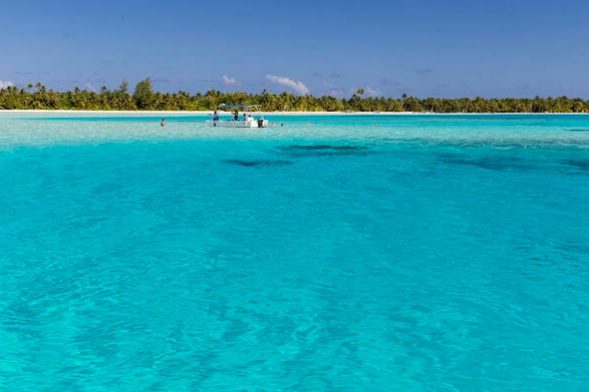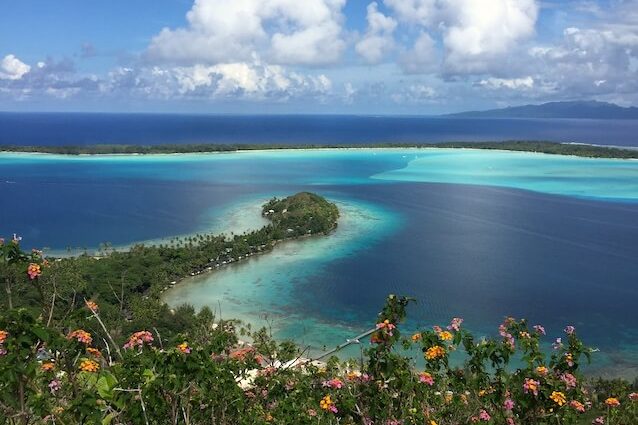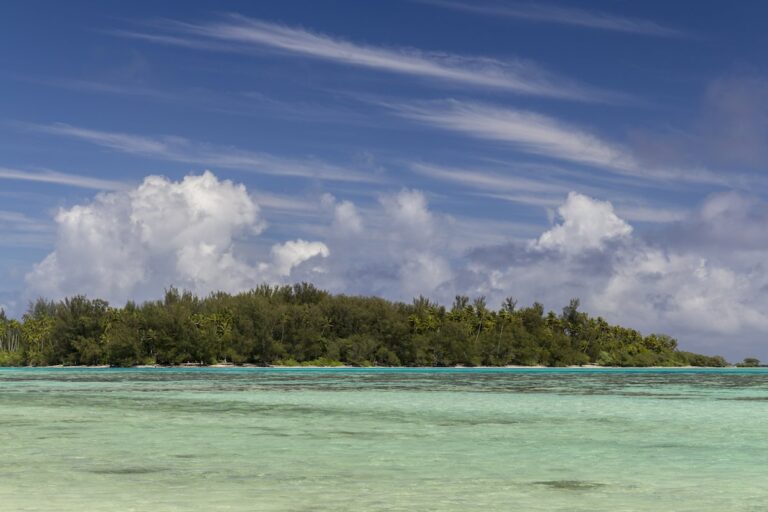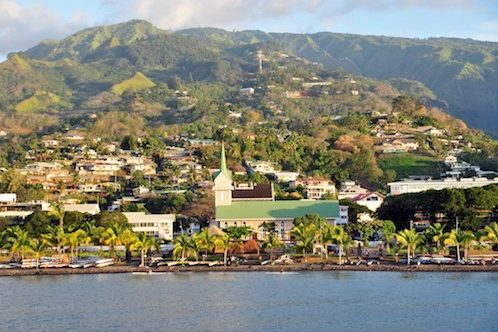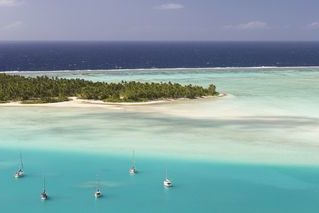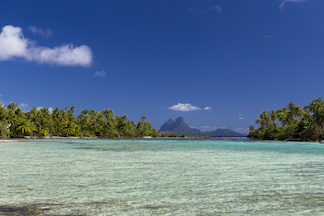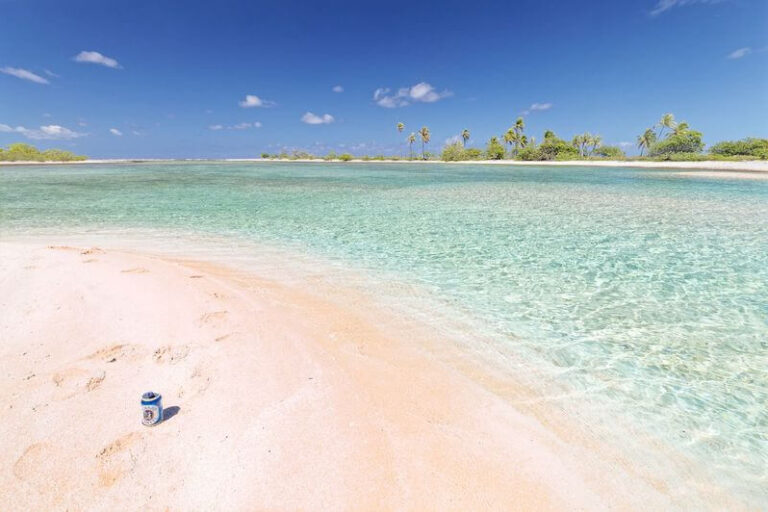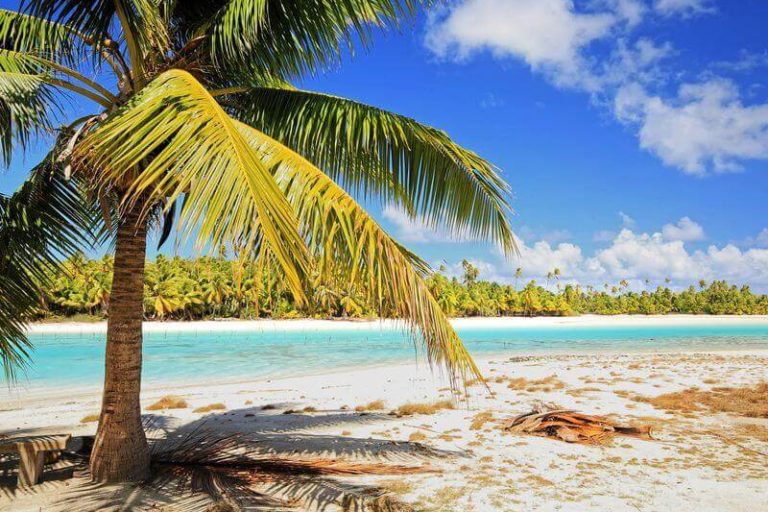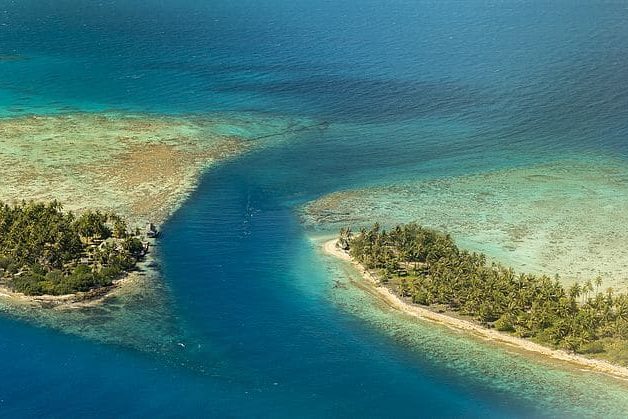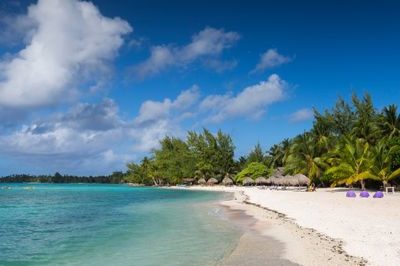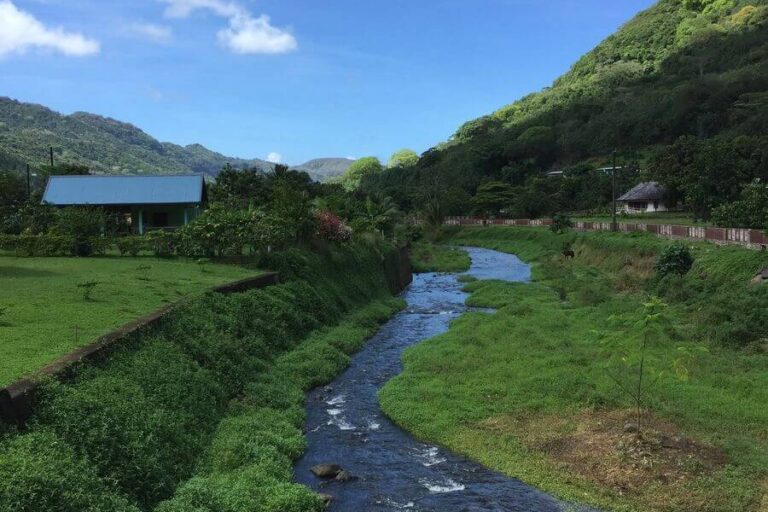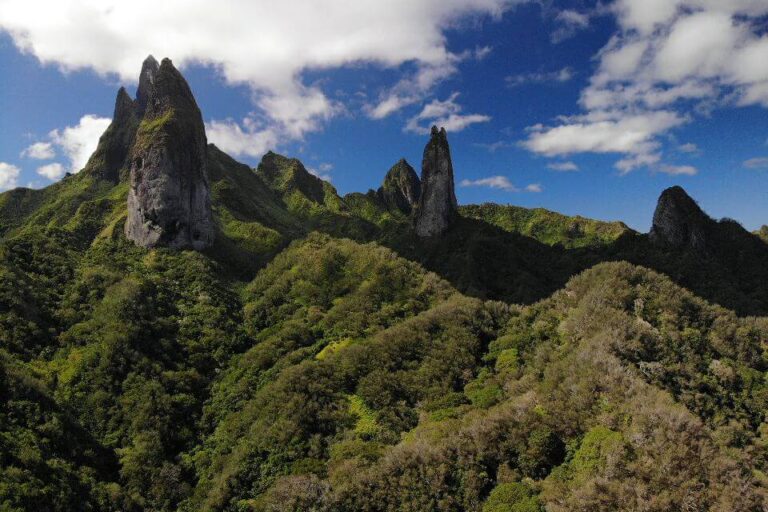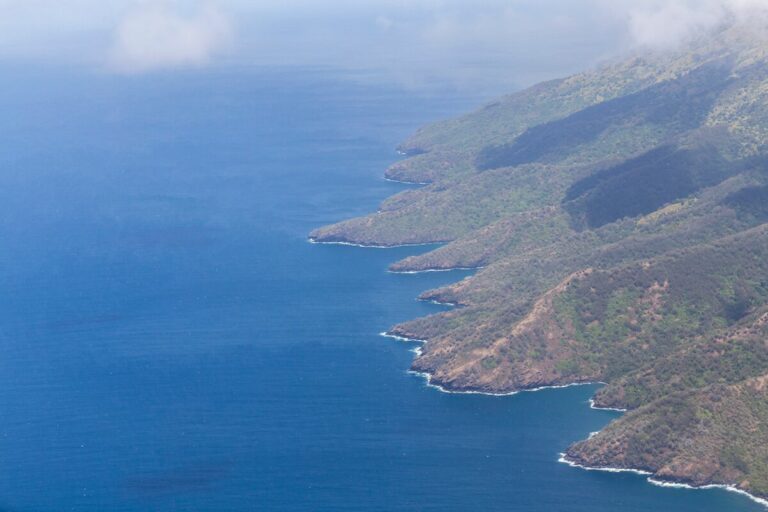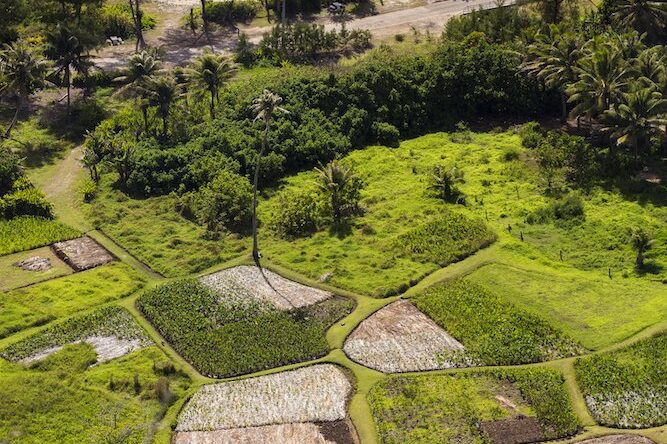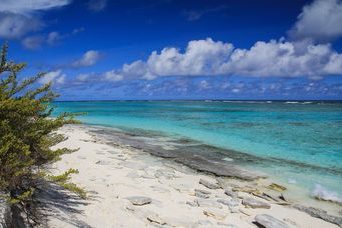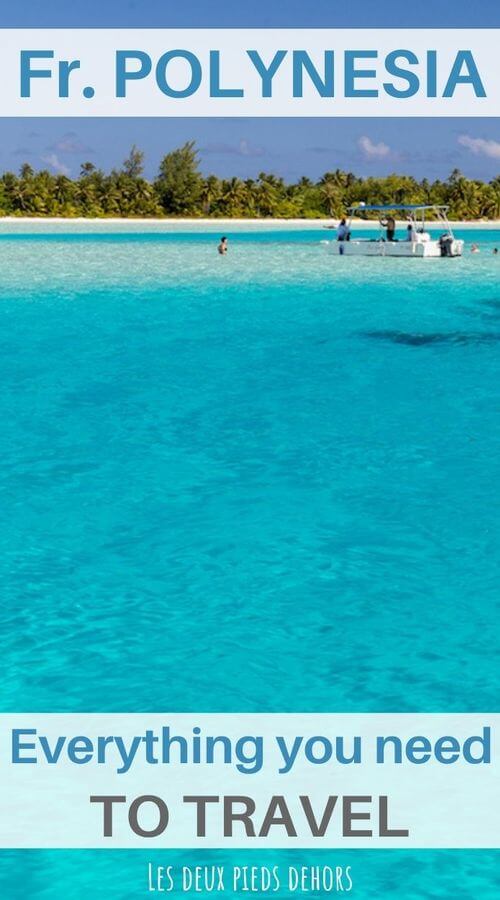Go explore the wonderful territory of French Polynesia. You will discover with pleasure and passion remote paradisiacal islands, amazing white sandy beaches, lagoons each more beautiful than the other, and a Polynesian culture still very present. This is the third French Overseas Territory in which I have lived including New Caledonia and the island of Mayotte (Indian Ocean)! You could almost say that the tropical oceanic climate and the southern winters are a good fit for me, don’t you think?
Traveling to French Polynesia
Are you hesitating on whether to book through a local travel agency or plan your trip to Tahiti on your own? I tell you everything!
Organize your trip to French Polynesia / Living in Polynesia
- Organize your trip
Budget, itinerary, weather, transportation… - Going to live in French Polynesia
Posts by Archipelago
- Society Archipelago
Tahiti, Moorea, Tetiaroa, Bora Bora, Huahine, Raiatea, Tahaa, Maupiti - Tuamotu Archipelago
Rangiroa, Tikehau, Ahé, Mataiva… - Marquesas Archipelago
Hiva Oa, Nuku Hiva, Ua Pou, Ua Huka, Tahuata, Fatu Hiva - Australes Archipelago
Rurutu, Raivavae, Rimatara, Tubuai, Rapa - Gambier Archipelago

Our must-sees in French Polynesia
I know it’s unlikely that you’re actually going to ask yourself this question, because if you’re reading these few lines, you probably already know why you want to go and discover French Polynesia on holiday. We’ll leave you dreaming by telling you what, in our opinion, are the 10 must-do places to visit during your stay in French Polynesia. Here’s what we think:
- Spend the night in an overwater bungalow: It may sound strange, but it’s certainly one of the best experiences you can have in French Polynesia. It is truly extraordinary to be able to sleep on the water with the sound of the sea in the background. Not to mention the possibility of having breakfast on your own private terrace or going diving in the lagoon from the comfort of your own bed – or almost!
- Discover life on the atolls: This is another experience not to be missed during your stay in French Polynesia. On a sandbank 2 or 300 metres wide, with the lagoon on one side and the Pacific Ocean hitting the coral reef on the other, you can discover life one metre above the water!
- Enjoy the diversity of French Polynesia: You might not expect it when you plan your trip to French Polynesia, but the territory is extremely diverse in terms of culture, population and food. Try to make the most of 100% of what Polynesia has to offer, away from the stereotypes of white sand and coconut palms.
- Enjoy the local flavours: French Polynesia has a lot to offer in this regard. You’ll be delighted to discover local dishes, including the raw fish in coconut milk for which Polynesia is famous, and the famous ma’a Tahiti, a traditional dish of fish or chicken cooked in banana leaves, accompanied by fruit and vegetables – a real treat!
- Buy a beautiful pearl: If there’s one place to buy a Tahitian pearl, it’s in French Polynesia. You’ll find plenty of them in Tahiti, of course, in the seaside jewellery shops, but I’d recommend buying them on the islands to support the local trade!
- Enjoy the flora and fauna: Admittedly, Polynesia isn’t the perfect destination for this, but there’s still plenty to see, especially underwater, where the underwater world will fill you with wonder.
- Discover the outlying archipelagos: I know that few of you have the motivation to go to the Marquesas, the Australs or the Gambiers, but if you can, go and discover an authentic Polynesia, very different from the other tourist islands.
- Talk to the people: Polynesians are basically nice people and we advise you to talk to the local population and discuss their customs.
Travel in French Polynesia - Practical information
Languages
Tahitian is still the native language used by the inhabitants on a daily basis. In French Polynesia, there are several derived languages such as Marquesan, Mangarevian and Paumotu (in the Tuamotus). With the arrival of Europeans and internationalisation, French became the official language and is now taught in schools.
In everyday life, the two blend seamlessly, and some Tahitian words have even become part of everyday French. You’ll have no trouble making yourself understood during your stay.
Formalities
Regardless of your nationality, a biometric or electronic passport valid for 6 months after your return date is required for a stay in French Polynesia. A French national identity card is not sufficient for entry into French Polynesia.
You do not need a visa if you are French. You can stay in French Polynesia for 3 months without a visa for Europeans, Canadians, Swiss and other countries.
If you are not a citizen of the European Union, it is best to check the official sites to see if you need a visa. A French driving licence is all you need to drive there (for french). Other nationalities are advised to apply for an international licence.
Getting there & around French Polynesia
Getting to French Polynesia
Tahiti Faa’a is the only international airport in French Polynesia. As you can imagine, it depends on where you’re flying from. From France it’s still possible to find flights for as little as €1,000 if you’re flexible. Prices can rise to over €2,000 in high season. Allow 22 hours for the flight from France, with a mandatory stopover (there are no direct flights).
From Switzerland or Belgium, you will probably have to fly via Paris, with a stopover. From Canada, there is a direct flight from Vancouver to Papeete. For Quebecers, the easiest way is via San Francisco or Los Angeles. From the USA, you can fly from Seattle, San Francisco, Hawaii, etc. Check this link to find the best fare.
There are 4 airlines: French Bee, Air France, Air Tahiti Nui and United.
How to get around between the islands and the archipelago
There are several ways to get around Tahiti. Flying is the quickest and easiest way with two local airlines: Air Tahiti and Air Moana. You can also travel by boat in the Society Archipelago with several ferry companies. In the other archipelagos, this is virtually impossible. There are regular ferries between the islands of Tahiti and Moorea, Raiatea and Tahaa, and local shuttles in the Marquesas.
Travelling with an agency or not?
After that, there is no right or wrong choice. It is entirely possible, if you feel like it, to organise what you want to see and do. To help you save time and get organised, we’ve put together our own guide, based on our 6 years of experience in the country. Unfortunately, it’s only in French at the moment, but we’re considering translating it into English. What do you think?
Time difference
From France, it’s easy: – 12h in summer and – 11h in winter.
From the USA :
- From the West Coast (Los Angeles): -2h
- From the east coast (New York) -5h
Best time to go
The planet’s climate is becoming increasingly unpredictable and nothing can be guaranteed during your stay. However, if you want to avoid the worst of the rainy season and cyclones, you should aim for between May and October. That’s a big range, but I can reassure you that it’s possible to have good weather in December too!
Vaccines
There are no vaccination requirements for entry into French Polynesia. As in all countries, it is recommended that you are up to date with the most common vaccinations (Hepatitis A/B + D.T. Polio, etc.) before you travel.
Currency / Travel expenses in French Polynesia
The little paradise that is French Polynesia uses the Pacific Franc, known as the XPF or CFP. For your information, €1 = 119.33 XPF all year round and 1$ = 110,70 xpf.
The local cost of living is high. You need to be aware of this when you come to French Polynesia on holiday. Here are some ideas:
Accommodation
- Camping: between 2,000 and 3,000 XPF/night
- Dormitory bed: 3,000 / 4,000 XPF
- Guesthouse: 8,000 to 12,000 XPF/person
- Hotels: Prices vary widely, from 15,000 – 30,000 XPF (small hotels) to 100,000 – 200,000 XPF/night for overwater bungalows.
Overall, few tourists choose to camp, but it is becoming more common on many islands. Guesthouses, which often include mountain-side houses or beachfront bungalows, are the most common type of accommodation. Overwater bungalows are an obvious choice in French Polynesia, especially for a first trip.
Activities in Tahiti
- Full day lagoon excursion: XPF 12,000/person
- Half day 4×4 excursion: 6,000/7,000 XPF/person
- A few hours kayaking/paddleboarding: 4.000 / 5.000 XPF/person
- Helicopter flight: from 35.000 XPF/person
- Snorkelling: 8.000 / 10.000 XPF
French Polynesia offers a wide range of water sports: diving, snorkelling in the lagoon, kayaking, paddle boarding, foiling, scuba diving, etc. But you don’t have to opt for paid activities during your trip, and you can keep a fairly reasonable budget by concentrating on free or low-cost activities: lazing around (that’s a good activity, right?), swimming in the lagoon’s turquoise waters and soaking up the sun. Soaking in turquoise water while sipping a cool Hinano, no?), discovering archaeological sites (Marae/Pae Pae), dancing, visiting pearl farms and vanilla plantations, swimming in waterfalls (especially on the higher islands: Tahiti, Moorea, Marquesas) and rivers.
On a personal note, even though most tourists concentrate on the Windward Islands/Leeward Islands and the Tuamotu (for divers) for a first trip to French Polynesia, I really recommend exploring the outer islands (Marquesas, Austral Islands, Gambiers). Admittedly, there will be fewer activities to speak of, but the authenticity and feeling of what I call the real Polynesia will be better!
Depending on the type of activity you’re planning, I really recommend booking your activities in advance. I particularly recommend the Manawa website, which Mélanie and I have been using for years and which we now use more and more to test new activities that we suggest to our readers. It’s a serious website, so you can go there with your eyes closed. Check out my activities!
Travelling
In Polynesia, it all depends on which islands you visit. Some are too big to cycle/walk around (Raiatea, Tahiti, Moorea), while others are more manageable (Tahaa, Bora Bora). For the atolls (Fakarava, Tikehau, Rangiroa), you don’t need to hire a car – a bike or scooter (at worst) will do. Expect to pay an average of 1,000 to 1,500 XPF per day for a bicycle, 3,000 to 5,000 XPF for a scooter and between 8,000 and 12,000 XPF per day for a car.
Eating out
As is often the case when travelling, this budget will vary greatly depending on what you want. You can reduce the budget by concentrating on a midday snack, a meal in a caravan or even cooking in your Airbnb. On the other hand, there are plenty of snack bars and restaurants offering food, but prices can go up very quickly. Expect to pay an average of 500-750 XPF for a snack, 1200-1800 XPF for a meal in a caravan, 1500-2500 XPF for a meal in a snack bar and between 2000-4000 XPF for a meal in a restaurant.
Average budget for a holiday in French Polynesia
I have to admit that it’s always very difficult to give an average budget for a trip, and even more so for a holiday in French Polynesia. Going on holiday is always very personal, and deciding where to spend your money is even more so. So the budget ranges will be quite wide, but on average I’d say (per person including flights)
- 2 weeks in French Polynesia: between €3 000 and €6 000
- 3 weeks in French Polynesia: between €4 000 and €8 000
If you’re on honeymoon and planning to stay in best resorts, your budget will be much higher !
Internet and phone
I’ll keep it simple: very few phone packages include French Polynesia. Generally speaking, you’re better off relying on the internet to call friends and family when you’re in French Polynesia. The same goes for calling service providers, booking a restaurant or accommodation. All of this can eventually be done via Messenger or WhatsApp if you have internet, for example at your guesthouse/hotel.
If you really want 4G throughout your stay, you could look at Vini or Vodafone’s internet options, for example.
Safety and security
In general, there is very little to be afraid of in French Polynesia. Apart from mosquitoes, which can bite you and carry dengue fever, you’re pretty safe! Watch out for currents at sea, stonefish and don’t panic about sharks… And watch out for centipedes (scolopendrons!).
Fauna/Flora
The fauna of French Polynesia, especially the land fauna, is quite poor, contrary to what you might think. Apart from a few geckos, wild pigs and goats, and cattle introduced by man, you’ll find almost nothing else. Underwater you’ll find a richer variety, although we’ve seen greater diversity elsewhere. Lovers of ‘big fish’ will undoubtedly be in for a treat, with regular sightings of sharks, turtles, dolphins and rays.
As for flora, Polynesia is known for some remarkable flowers: the tiare flower, the flamboyant, the hibiscus, the coconut palms, the tamanu and the famous local chestnut tree, the mape.
Culinary specialities
Make the most of your stay and try some of the local delicacies: coconut-milked raw fish, gazpacho and red tuna sashimi (an absolute delight) and chao-men (Chinese fried noodles).
Religion
Today, Polynesia boasts a great diversity of religions, with over 50% Protestant and 35% Catholic. You’ll also find Mormons, Seventh-day Adventists, Jehovah’s Witnesses, Jewish communities and Latter-day Saints.
I expressly wanted to add a few lines on this dream destination, this little paradise lost in the middle of the ocean, still rightly considered to be off the beaten track. It must be said that with barely 200,000 tourists per year, French Polynesia does not attract large crowds of tourists. For many people, French Polynesia remains a dream location, a mostly unattainable luxury destination. French Polynesia is far away and undoubtedly very expensive to get to. That’s a fact. Besides, most tourists in French Polynesia are the ones on luxury cruises, on the cruise ships I always see on the waterfront.
I came here for my job at the end of 2015. I was already dreaming (living in Mayotte Island) of discovering this small earthly paradise. Like many, I had heard a lot about it and seen a lot of pictures of these islands and heavenly beaches. I am now very used to the tropics and the sweetness of life you find there, that’s for sure.
The difficulty for me in writing this travel blog is to find a balance between talking to you about the wonderful things to see here while on a family trip, a world tour or a diving trip, and telling you about my daily life. For now, I prefer not to talk about my private life too much, even though I wrote a complete guide on living here. If you are reading this article you are probably looking for information for your next vacation in Tahiti.
Most of you usually have a somewhat distorted view of French Polynesia before coming here. On almost everyone’s minds are the fine sandy beaches, the Tahitian women in sarongs and a blue lagoon as far as the eye can see! There is of course all of that, but only when you’re visiting. Daily life in Tahiti is very different and I will try to describe my feelings about life here very soon.


Seascapes of French Polynesia…
In the meantime, what do I like about French Polynesia, what do I recommend? In a few words; take the time to visit Tahiti and its lush vegetation for at least a couple of days. Most people don’t take the time to do this and that, in my opinion, is a real shame. Then take a boat trip from Tahiti to Moorea to taste the sea air and spend a few days on this majestic island, which is very much like the postcard you had imagined. Then, you will have to make some decisions. My heart really lies with the distant archipelagos, especially the Gambier or Marquesas. It is there that I personally feel you will discover the “true French Polynesia” and where life is still authentic, something we would like to see everywhere. For lovers of white sandy beaches and underwater worlds, I recommend a day trip to the atoll of ‘Tetiaroa’ and perhaps a week in the Tuamotu archipelago. The Leeward Islands are a good mix of land and sea. A catamaran cruise is often recommended from the island of Raiatea. Many of you will also want to spend a few days in Bora Bora, in one of the many small overwater bungalows at the Sofitel, Intercontinental or St Regis. Forget the “cheap stay” and enjoy this splendid timeless setting. For the bravest and those with time on their hands, I would really recommend you visit French Polynesia by cargo ship, going to the atolls far from the Tuamotus or the island of Rapa in the Austral Islands. I really want to try this experience for myself. For example, there is a cargo ship that serves the eastern Tuamotu for 30 days, stopping for a few hours at some ‘forgotten’ atolls delivering supplies. The experience must be magical in terms of encounters and authenticity.
On my blog you will in fact find a large number of articles on the islands I’ve visited which I hope will help make your choice on places to visit. And actually, that’s the hardest part about planning a trip to French Polynesia: deciding what you want to see and do. You can’t “see everything and do everything”, because trying to do so will stop you from really experiencing French Polynesia, and I think you’ll end up skimming over everything. I usually recommend spending at least 3 to 4 days per island, which is a good way to soak up the local life, the scenery and simply take the time to enjoy your surroundings!
I wish you an excellent trip
Sylvain

I would like to add a few words about the Polynesian archipelagos in a synthetic way to help with planning your trip. French Polynesia is composed of 5 archipelagos:
- Society Archipelago: the most visited and the most well-known thanks to the famous islands of Bora Bora and Tahiti. The majority of tourists remain on this archipelago for a first stay in French Polynesia with a combined program of the islands of Tahiti, Moorea, Huahine, Raiatea, Maupiti, Tahaa, Bora Bora and the atoll of Tetiaroa. You will be amazed by the breathtaking scenery among all these must-sees! Hiking in the valleys of Tahiti/Moorea + the black sandy beaches of Tahiti + discovery of Polynesian culture and legends in the other islands + bungalows on stilts in the pearl of the Pacific! Your budget will be rather limited by staying in this archipelago, but the essentials are there for a first trip,
- Tuamotu Archipelago: second most visited Polynesian archipelago, it is known for scuba diving. The majority of tourists stop on the 3 most developed exotic islands of the archipelago: Rangiroa, Fakarava, and Tikehau, mainly for the experience of the lagoon and scuba diving. On the program: white sand, coconuts on the beach (haha), pearl farms, swimming in the lagoon to discover the underwater world and the marine fauna.
- Marquesas Archipelago: few tourists travel here on their first trip. It’s further away, more expensive, but so beautiful and authentic. This is the archipelago I prefer with the Gambier. The two most visited main islands: Hiva Oa and Nuku Hiva,
- Gambier Archipelago: I don’t think I’ve had a single tourist ask for any information about it. Mangareva is the only island that can be reached by plane in the archipelago. I found it magical and really charming. Indeed, it’s real testimony of time stopping in the middle of the Pacific. On the program: a bath of culture, discovery of the arrival of the first missionaries back then, breathtaking deserted beaches, not one tourist, to sum up, I love it.
- Australes Archipelago: it is an archipelago also very little visited overall. It is also very authentic, less « postcardy » in the way that people are generally looking for. It is also known for its basketry, its whales (Rurutu) and its beaches. (Raivavae).




